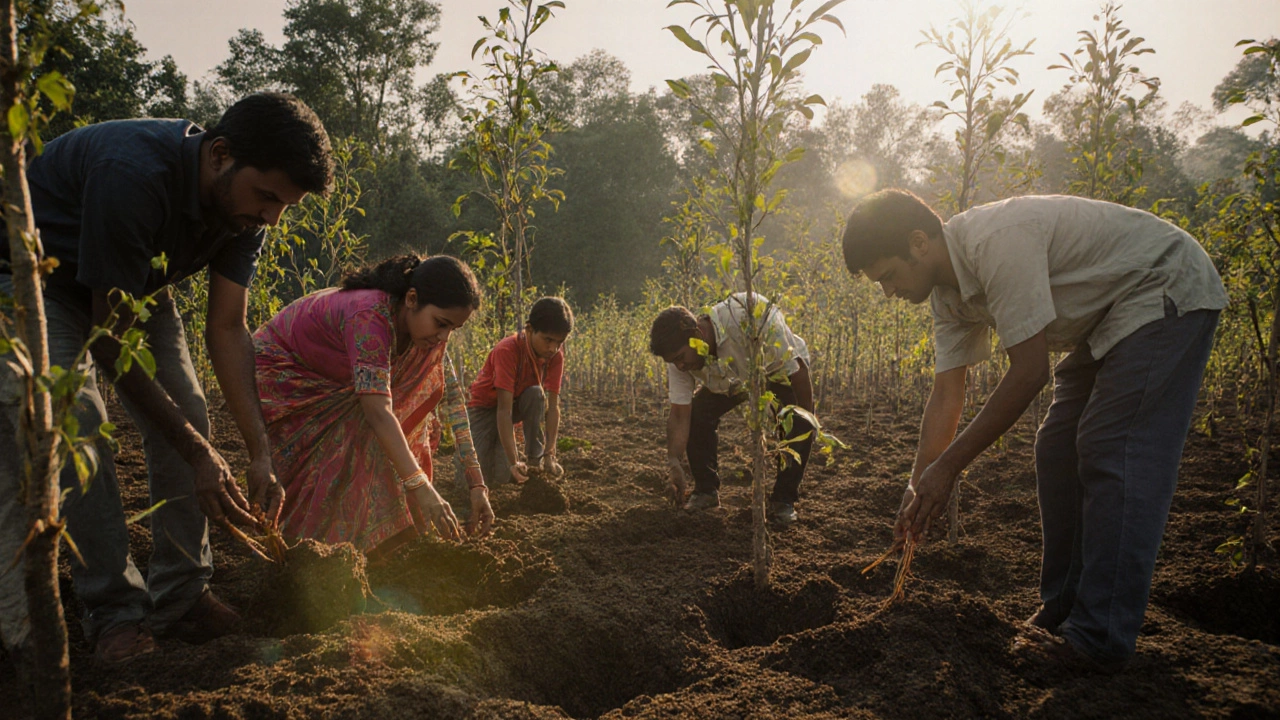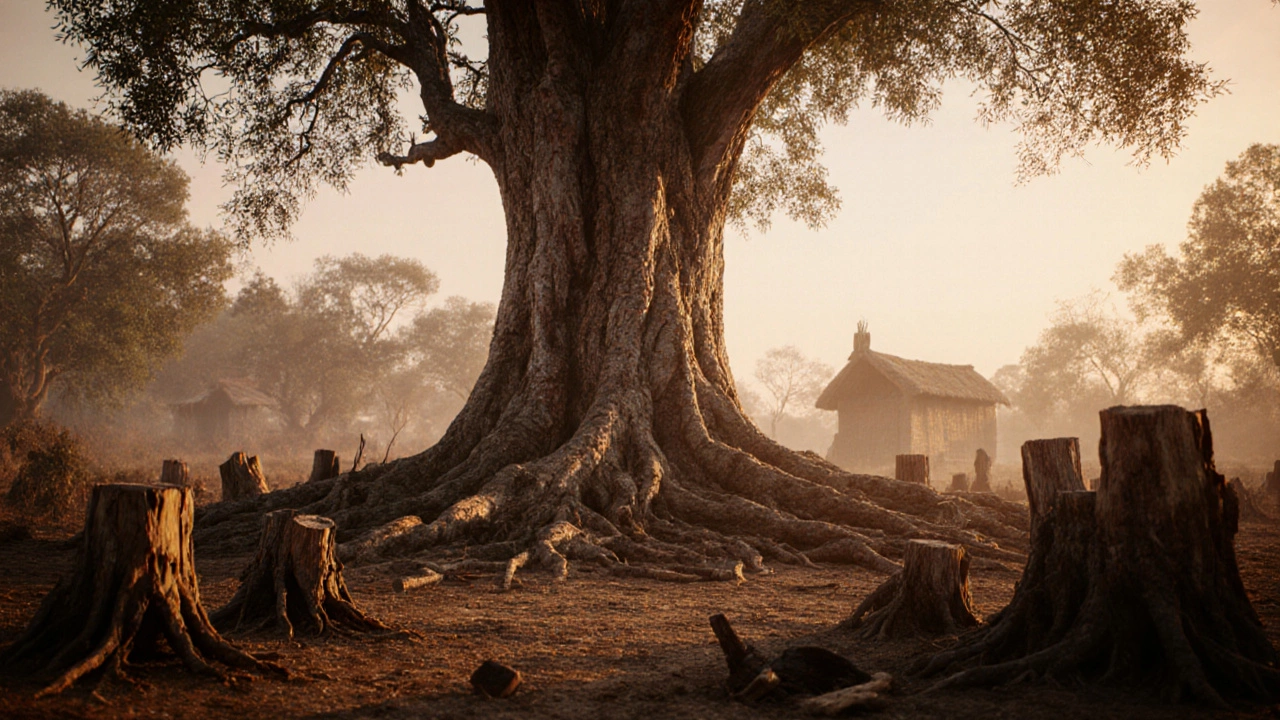Endangered Indian Plants Explorer
Explore the endangered plant species of India and learn how you can help conserve them.
Conservation Tips
- Buy certified sustainable products
- Support local nurseries and conservation NGOs
- Plant native species in your garden
- Raise awareness through social media
- Report illegal logging activities
Key Takeaways
- India’s sandalwood (Santalum album) is the most iconic plant facing severe threat.
- Over‑harvesting, habitat loss and illegal trade drive most of the danger.
- Seven other native species-Indian rosewood, Himalayan yew, Bengal orchid, Sundarban mangrove, agarwood, Brahm Kamal and more-are also listed as endangered.
- Government programs, community nurseries and responsible buying can reverse the trend.
- Every garden enthusiast can contribute by planting certified saplings and supporting conservation NGOs.
When you hear the phrase "endangered plant India", the first name that pops up is sandalwood. This fragrant tree, prized for its oil and timber, has been pushed to the brink by decades of illegal logging and habitat fragmentation. Understanding why sandalwood is in danger-and which other plants share its fate-helps anyone who cares about gardening, biodiversity, or simply wants to make smarter choices when buying wood products.
What qualifies a plant as “endangered”?
In the International Union for Conservation of Nature (IUCN) system, a species earns the Endangered label when it meets any of several quantitative thresholds. These include a population decline of more than 50% over ten years, an area of occupancy under 5,000 km², or fewer than 2,500 mature individuals remaining. India follows the IUCN framework through its Wildlife (Protection) Act and the National Biodiversity Authority, which maintain Red‑List assessments for native flora.
Key drivers of plant endangerment in India are:
- Unsustainable harvest for timber, medicine, or incense.
- Conversion of forests to agriculture, highways, or mining.
- Climate change altering temperature and rainfall patterns.
- Invasive species outcompeting native seedlings.

Santalum album is a fragrant tree native to southern India, renowned for its aromatic heartwood and oil used in perfumery and traditional medicine
Sandalwood thrives in dry deciduous forests of Karnataka, TamilNadu, and AndhraPradesh. Historically, villages harvested saplings in a controlled manner-taking only a few branches every few years. Since the 1990s, a black market for high‑value oil exploded, and illegal logging intensified. Today, wild sandalwood populations are estimated at less than 30% of their historic range.
Major threats include:
- Poaching for essential oil, which commands up to $1,200per kilogram on the black market.
- Clearing of dry forests for cashew and pepper plantations.
- Fragmentation that prevents natural pollination by insects like carpenter bees.
Legal protection came in 1998 when India listed sandalwood under ScheduleI of the Wildlife (Protection) Act. Still, enforcement gaps allow smugglers to transport logs across borders, especially to the Middle East and Europe.
Other Indian Plants Facing the Same Crisis
While sandalwood steals the spotlight, several other native species are slipping toward extinction. Below are brief profiles of the most vulnerable:
Dalbergia latifolia (Indian rosewood)
A hardwood prized for furniture and musical instruments. Over‑extraction for export has reduced mature trees by 60% across the Western Ghats.
Taxus wallichiana (Himalayan yew)
The source of the anti‑cancer compound taxol. Habitat loss in the Eastern Himalayas and unregulated harvesting for medicinal use threaten its survival.
Aerides chrysantha (Bengal orchid)
A striking epiphytic orchid found in moist deciduous forests of West Bengal and Odisha. Illegal collection for the ornamental trade has decimated wild populations.
Heritiera fomes (Sundarbans mangrove)
This mangrove forms the backbone of the Sundarbans delta. Rising sea levels and upstream freshwater diversion strain its regeneration.
Aquilaria malaccensis (Agarwood)
Valued for its resinous scent in incense and perfumery. Over‑harvesting in the Western Ghats has pushed it onto the IUCN Red List.
Saussurea obvallata (BrahmKamal)
An alpine flower that blooms above 3,500m in the Himalayas. Climate‑induced glacial retreat reduces its already narrow habitat.
Current Conservation Efforts
India’s response combines legal, scientific, and community actions:
- Government nurseries: The Ministry of Environment runs certified sandalwood seed farms in Karnataka that supply legally grown saplings.
- Community‑based monitoring: Tribes in the Western Ghats use GPS‑enabled apps to flag illegal logging hotspots.
- Ex‑situ conservation: Botanic gardens in Delhi and Kolkata maintain living collections of endangered orchids, yew, and mangroves.
- International partnerships: CITES limits trade of rosewood, yew, and agarwood, while NGOs run awareness campaigns across border markets.
Success stories exist. In the 2010s, a joint effort between the Karnataka Forest Department and local NGOs raised sandalwood seedling survival from 30% to 75% by improving soil inoculation with mycorrhizal fungi.

How You Can Help
Even if you’re not a forest ranger, your daily choices matter:
- Buy certified sustainable sandalwood products that display the Indian Silk Mark or an equivalent certification.
- Support NGOs like the World Wildlife FundIndia or the Shiva Trust that fund re‑planting projects.
- Grow native saplings in your garden-many nurseries now sell sandalwood and rosewood seedlings that are legal and locally sourced.
- Raise awareness on social media using hashtags like #SaveIndianFlora.
- Report suspicious timber activity to the nearest forest department office.
Small actions add up. Imagine every homeowner in a district planting just one sandalwood sapling-a forest could regrow in a generation.
Quick Reference Table
| Plant | IUCN Status | Main Threats | Key Conservation Actions |
|---|---|---|---|
| Sandalwood (Santalum album) | Endangered | Illegal oil trade, forest clearing | Certified nurseries, CITES regulation |
| Indian rosewood (Dalbergia latifolia) | Endangered | Timber export, habitat loss | Community monitoring, CITES |
| Himalayan yew (Taxus wallichiana) | Endangered | Medicinal harvesting, climate shift | Ex‑situ seed banks, sustainable harvesting |
| Bengal orchid (Aerides chrysantha) | Endangered | Orchid trade, habitat fragmentation | Propagation labs, habitat protection |
| Sundarbans mangrove (Heritiera fomes) | Vulnerable | Sea‑level rise, freshwater diversion | River flow management, restoration planting |
| Agarwood (Aquilaria malaccensis) | Endangered | Over‑harvesting for resin | Cultivation programs, CITES |
| BrahmKamal (Saussurea obvallata) | Vulnerable | Glacial retreat, tourism pressure | Alpine reserve creation, seed collection |
Frequently Asked Questions
Why is sandalwood so valuable?
The heartwood contains a high‑quality oil that’s used in perfumes, incense, and traditional Ayurvedic medicines. Its slow growth and limited geographic range make each kilogram extremely pricey, driving illegal harvest.
Can I plant sandalwood in my backyard?
Yes, if you live in a semi‑arid climate similar to central‑southern India. Certified saplings are available from government‑approved nurseries. They need well‑drained soil, full sun, and a host plant for the required mycorrhizal partnership.
What does CITES do for endangered Indian plants?
CITES (the Convention on International Trade in Endangered Species) lists many Indian plants-like rosewood and yew-on its Appendices. This restricts cross‑border trade unless exporters have proper permits, helping reduce illegal demand.
How can I tell if a sandalwood product is legal?
Look for certification labels such as the Indian Silk Mark, the Forest‑Dept license number, or a QR code that links to a traceability database. Reputable retailers will provide this information openly.
Are there community projects I can join?
Many NGOs run volunteer planting drives in the Western Ghats and the Sundarbans. Websites of the Shiva Trust, the World Wildlife FundIndia, and state forest departments list upcoming events and ways to donate seedlings.

